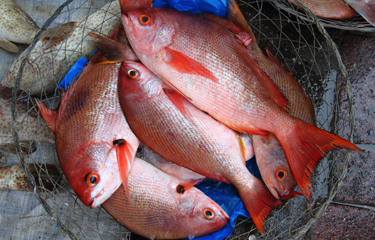The Gulf of Mexico Fishery Management Council announced on Thursday, 4 April, it approved plans for states to manage the red snapper recreational fishery for the upcoming season.
Pending the approval of U.S. Commerce Secretary Wilbur Ross, which is likely since he’s praised the ongoing pilot project, the five states will get the quota share they originally requested in their applications.
Florida holds the largest share with 44.8 percent of the allocation. Alabama will receive 26.3 percent. Louisiana will receive 19.1 percent, while Texas (6.2 percent) and Mississippi (3.6 percent) get the remainder.
For the second straight year, each state will now get to set its own recreational season and have jurisdiction over private anglers who fish up to 200 miles off the state’s coast.
Earlier this month, NOAA Fisheries gave final approval on a council decision to raise the recreational catch limit from 6.7 million pounds to 7.4 million pounds.
NOAA Fisheries also approved decreasing the target catch buffer to 9 percent. That puts the target at 6.3 million for this upcoming season, and the decreased buffer should give anglers more days in the season.
The Center for Sportfishing Policy, which has pushed for state control over the recreational fishery, praised the announcement and thanked Ross and U.S. Rep. Garret Graves (R-Louisiana) for their work on the pilot program.
“Let's give credit where credit is due,” the group said on Twitter. “Today's win doesn't happen w/o the leadership of @RepGarretGraves and @SecretaryRoss. Thank u for focusing on public access to public resources!”
The Environmental Defense Fund also praised the news, but the group tempered its remarks because it has still concerns about overfishing.
“While this is a solid step in the right direction, the states and NOAA now have to work together to reconcile their data to establish a ‘common currency’ by which we can measure total recreational harvests across the Gulf,” said Sepp Haukebo, EDF’s manager for private angler reform, in a statement. “EDF will be watching closely to make sure the states do their part to submit accurate and timely harvest numbers. We have come too far in rebuilding the red snapper population to risk denying future generations a world-class fishery.”







